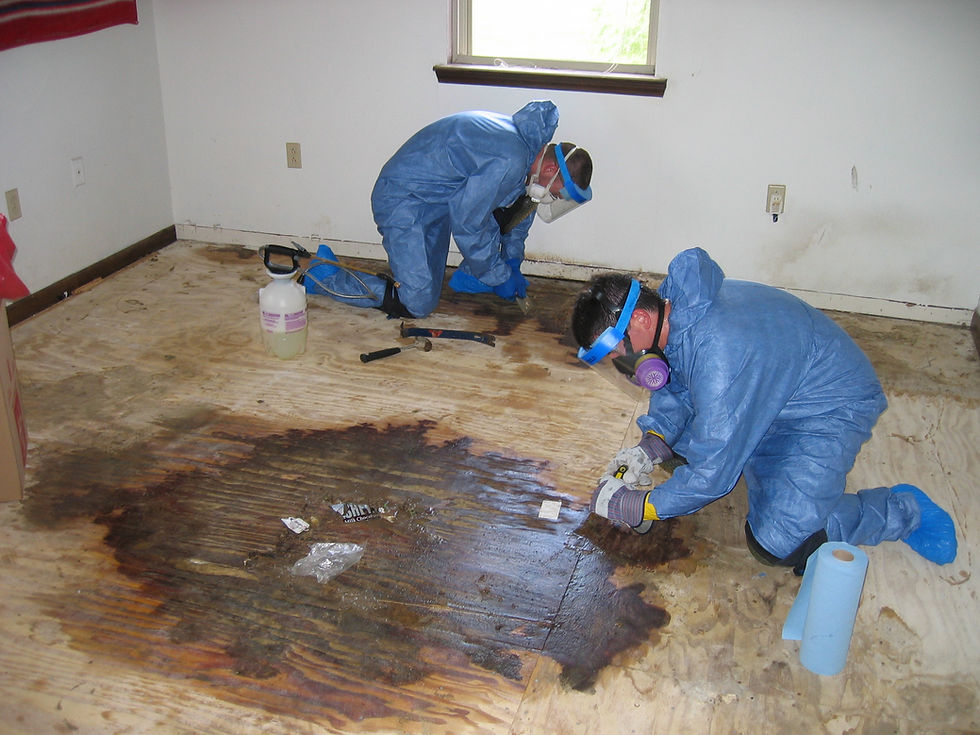Labor is one of the most significant component costs of traumatic event remediation. The skilled labor used to respond to the affects of a traumatic event has training requirements (such as OSHA’s 1910.1030 Bloodborne Pathogens and 1910.132 Personal Protective Equipment) that must be understood not only in concept but also in its application.

The hazards found on these traumatic event remediation projects are very real.

Each person who takes part in the remediation must understand the combination of sharp edges (needles, broken tile, mattress springs, and cutting tools) and potential bloodborne pathogens. This understanding is also mandatory in relation to the containment of the biohazard waste produced by the scene.

In addition to the hazards associated with puncture risk, there are also the risks of moving large items such as furniture down stairways in order to remove them from the property. Each technician that performs the labor component must also comprehend the safe use of all tools deployed, function of needed equipment, the chemicals utilized to disinfect and deodorize, and the proper containment and transport of regulated biohazard medical waste. Outside of bloodborne pathogens, technicians must also understand and respect the hazards associated with methamphetamine lab and concentrated tear gas residue.

One of the most important tasks a technician can perform is the proper application of personal protective equipment (PPE). The proper PPE needed for the project is vital to the health and safety of the technician using it. Without the proper PPE, the technician is potentially exposed to risks that could have been mitigated with the use of the PPE needed for the specific task.

Technicians must also be aware of the hazards associated with a confined space when working. OSHA’s 1910.145 Confined Space standard addresses this point but a constant awareness of one’s surroundings is required when moving around a project with many inherent safety risks.

Chemical disinfectants, odor neutralizers, conventional cleaners, and paint are employed to rid the environment of potential pathogens, residue, stains, and odor. OSHA standard 1910.1200 Hazard Communication’s scope addresses the hazards associated with the numerous chemical substances applied during traumatic event remediation and the need to inform those who use these chemicals of the hazards associated with each.
The Hazard Communication standard dictates the requirements for container labeling in addition to the production of a material safety data sheet (MSDS) to inform those who use these materials of the exposure risk.

Equipment such as atomizing chemical foggers are used to distribute chemicals in a very fine aerosol in order to apply the substance across exposed surfaces of the contaminated environment and HVAC system. In addition to the chemical foggers, HEPA-filtered air scrubbers are often employed in traumatic event remediation in order to improve air quality through filtration, as well as, circulate and evacuate the affected atmosphere in the structure. A shop vacuum is often needed to recover dust and debris in addition to broken glass.

In order to respond to traumatic events and complete the remediation projects, a vehicle with all the needed tools must be available to transport the required equipment and house the waste recovered from the scene once contained.

Commentaires